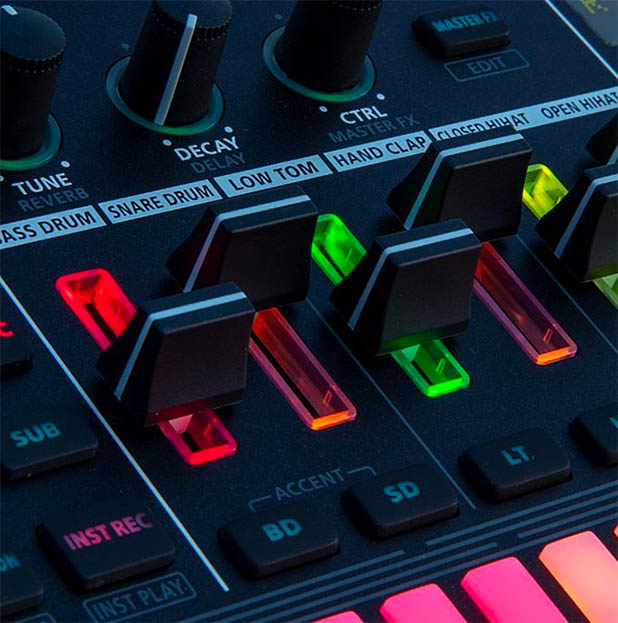
What is Virtual Tone Wheel Technology?
Everything you need to know about Roland’s Virtual Tone Wheel technology to recreate the classic sound of the tone wheel organ. The classic tone wheel
The role of the producer and their place of work has evolved over the years
thanks to the advances in technology and modern music-making trends.
You no longer need a large and expensive “professional” studio to produce a successful
top 10 hit and the proof is in such successes as Billie Eilish, Beck and Owl City to name a few.
If you’re wanting to learn how to start out with basic beat making, or dive deeper
into sequencing and song recording, here is a great place to start.

Not long ago, studio-quality recording, mixing and were only in reach of those who had the money to hire out a professional recording studio.
These days, with computer power on the rise and very affordable hardware and software, digital computer music production setups are easily accessible to the public. Welcome to computer music production for beginners part 1: The Essentials.

There are two ways to make music with a computer set up. These are, recording real instruments with microphones or going virtual with instrument plugins and MIDI.
While there are some producers who stick solely to one method, most of us find a comfortable balance between the two. Let’s have a look at both methods and see how they can benefit you, as an aspiring producer.

Welcome to the TR-6S Ultimate Guide ! The new rhythm performer from Roland has much more than meets the eye and is a great way to get started with beat-making or get hands-on with music production.

Home studios are wonderful things, and other than the pleasure they give the user, they can also be expanded gradually to increase facilities and to improve quality.
However, I’ve seen home recording studio owners spend alarming amounts of money on things that I know are going to make little or no difference, so how should you deploy your budget?


Since the introduction of the legendary TR-808 in 1980, and the TR-909 in 1983, Roland TR drum machines have been used to create countless hit records, and have contributed to the development of entirely new genres of music.
This ultimate “how-to” guide includes everything you need to know to get the most out of your TR-8S in the studio. The articles include videos, diagrams, along with more detailed descriptions and tutorials. There are also some useful pro tips scattered throughout!

Everything you need to know about Roland’s Virtual Tone Wheel technology to recreate the classic sound of the tone wheel organ. The classic tone wheel

Everything you need to know about Roland’s V-Synth technology. The Roland V-Synth combines multiple oscillator technologies with real time control of a waveform’s pitch, time

Everything you need to know about Analog Synthesis. Sound is caused by a vibrating object creating changes in air pressure. This vibrates our ear drum,

Everything you need to know about Roland’s Analog Circuit Behaviour technology to recreate classic analog instruments. Analog Circuit Behaviour (ACB) is the technology behind the

Everything you need to know about Roland’s SuperNATURAL modelling technology to create organic and realistic instruments. Roland SuperNATURAL technology has gone from being a feature

The Roland Icon Series is a collection of articles looking back at the most popular and recognised Roland instruments. In over four decades, Roland has

The Roland Icon Series is a collection of articles looking back at the most popular and recognized Roland instruments. In over four decades, Roland has

The Roland Icon Series is a collection of articles looking back at the most popular and recognised Roland instruments. In over four decades, Roland has

The Roland Icon Series is a collection of articles looking back at the most popular and recognised Roland instruments. In over four decades, Roland has

Everything you need to know about Roland’s PCM synthesizers. A PCM synthesizer uses samples as it’s primary sound source. In case you didn’t know, PCM

The Roland Icon Series is a collection of articles looking back at the most popular and recognised Roland instruments. In over four decades, Roland has